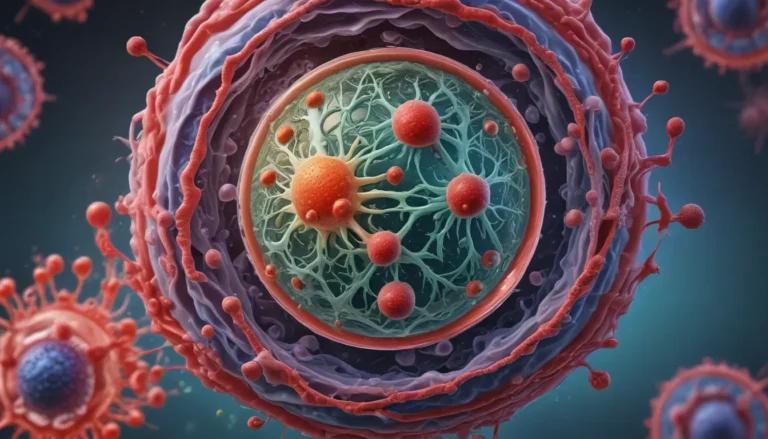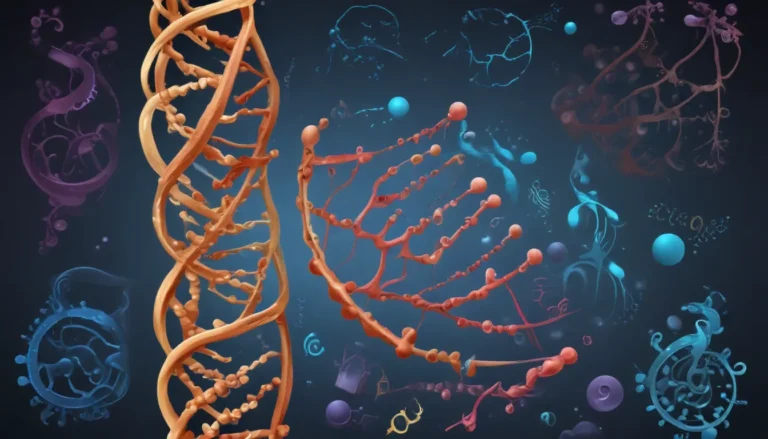A Note About Images: The images used in our articles are for illustration purposes only and may not exactly match the content. They are meant to engage readers, but the text should be relied upon for accurate information.
Gene regulation is a captivating aspect of biology that orchestrates the delicate balance of gene expression, ultimately shaping the behavior and functions of organisms. Dive into the mesmerizing world of gene regulation as we explore eight intriguing facts that underscore the complexity and significance of this process. From the pivotal role of gene regulation in development to the profound implications for disease and therapeutics, uncover the marvels of gene regulation that continue to intrigue scientists and researchers worldwide.
Deciphering the Symphony of Gene Regulation
- Gene regulation acts as a conductor directing a symphony, ensuring that the right genes are activated at the right time to create various components of the body.
- Similar to a secret code, gene regulation involves intricate chemical marks and networks that govern how our genes function, influencing aspects ranging from growth to health.
Gene Regulation: A Crucial Player in Development
Gene regulation plays a pivotal role in the development of organisms by orchestrating the formation of different tissues and organs. It ensures precise activation of genes at specific times and in particular cells, facilitating the intricate processes of growth and differentiation.
Interconnected Gene Regulatory Networks
Genes do not work in isolation but are interconnected within complex regulatory networks. These networks consist of multiple genes that interact with each other, creating a finely woven web of connections. Changes in the regulation of one gene can trigger a cascade effect throughout the network, leading to widespread alterations in gene expression.
Epigenetic Modifications: The Silent Regulators
- Epigenetic modifications, such as DNA methylation and histone modifications, serve as chemical marks that influence gene expression without altering the DNA sequence.
- These modifications act as a regulatory layer atop the genetic code, determining whether a gene is active or inactive based on its specific chemical modifications.
Environmental Influence on Gene Regulation
External factors, including environmental cues and signals, can impact gene expression. Temperature variations, nutrient availability, and exposure to toxins are among the factors that can influence gene regulation, showcasing the remarkable adaptability of living organisms.
Non-Coding RNA: A Regulatory Powerhouse
- Contrary to traditional beliefs, non-coding RNAs have emerged as essential regulators of gene expression, interacting with other genes or RNA molecules to modulate their activity.
- These RNA molecules play a crucial role in the complexity of gene regulation, further highlighting the intricate mechanisms at play within cells.
Disease Implications of Gene Regulation
Malfunctions in gene regulation can have profound consequences and are implicated in various diseases. Abnormal gene expression can lead to uncontrolled cell growth, tumor development, and metabolic disorders. Understanding and manipulating gene regulation offer significant potential for therapeutic interventions.
Cell- and Tissue-Specific Gene Regulation
Not all genes are active in every cell or tissue of an organism. Gene regulation ensures that only the necessary genes are expressed in specific cell types or tissues, crucial for the proper functioning and specialization of different cell types within an organism.
Journey into the Enigmatic World of Gene Regulation
While advancements have been made in understanding gene regulation, much remains to be discovered. The intricate mechanisms governing gene regulation continue to unveil enigmatic phenomena that challenge current knowledge. Unraveling the mysteries of gene regulation could revolutionize fields such as medicine, agriculture, and biotechnology, opening doors to new possibilities and advancements.
Exploring the Intricacies of Gene Regulation
- Gene regulation is a captivating field with vast opportunities for exploration and discovery.
- Delving into gene regulatory networks reveals their interconnected nature and far-reaching effects on cellular processes.
- RNA nucleotides hold intricate secrets that offer insights into the complexities of gene expression.
- RNA polymerase, the key enzyme in transcription, plays a fundamental role in gene regulation, underscoring its significance in cellular mechanisms.
Conclusion: Unveiling the Secrets of Gene Regulation
Gene regulation is a captivating and multifaceted process that shapes the functioning of our genes. Through mechanisms such as transcription factors, epigenetic modifications, and non-coding RNAs, genes can be finely tuned to respond to diverse environmental cues and perform specific functions. Understanding gene regulation is paramount in genetics, development, and disease research, offering revolutionary possibilities for personalized medicine and targeted therapies.
Frequently Asked Questions
-
What is gene regulation? Gene regulation refers to the process of controlling gene expression in cells or organisms to ensure appropriate gene activity.
-
Why is gene regulation important? Gene regulation is crucial for organism development, cell specialization, responding to environmental changes, and maintaining internal balance.
-
What are transcription factors? Transcription factors are proteins that regulate gene expression by binding to specific DNA sequences and controlling the rate of gene transcription.
-
What are epigenetic modifications? Epigenetic modifications are chemical changes to DNA and associated proteins that influence gene expression without altering the DNA sequence.
-
How do non-coding RNAs regulate gene expression? Non-coding RNAs interact with mRNA molecules to modulate gene expression by promoting or suppressing protein translation.
-
Can gene regulation be disrupted? Yes, disruptions in gene regulation can lead to diseases characterized by abnormal cell growth, developmental disorders, and genetic conditions.
-
What are the therapeutic implications of gene regulation? Understanding gene regulation opens avenues for targeted therapies tailored to individual genetic profiles for personalized treatments.
-
How is gene regulation studied? Experimental and computational techniques, such as chromatin immunoprecipitation and RNA sequencing, are employed to unravel the complex networks involved in gene regulation.
In the world of gene regulation, mysteries continue to unfold, paving the way for profound discoveries and advancements in science and medicine. Embrace the complexities of gene regulation and embark on an enlightening journey into the intricate mechanisms that underpin the functioning of life itself.






